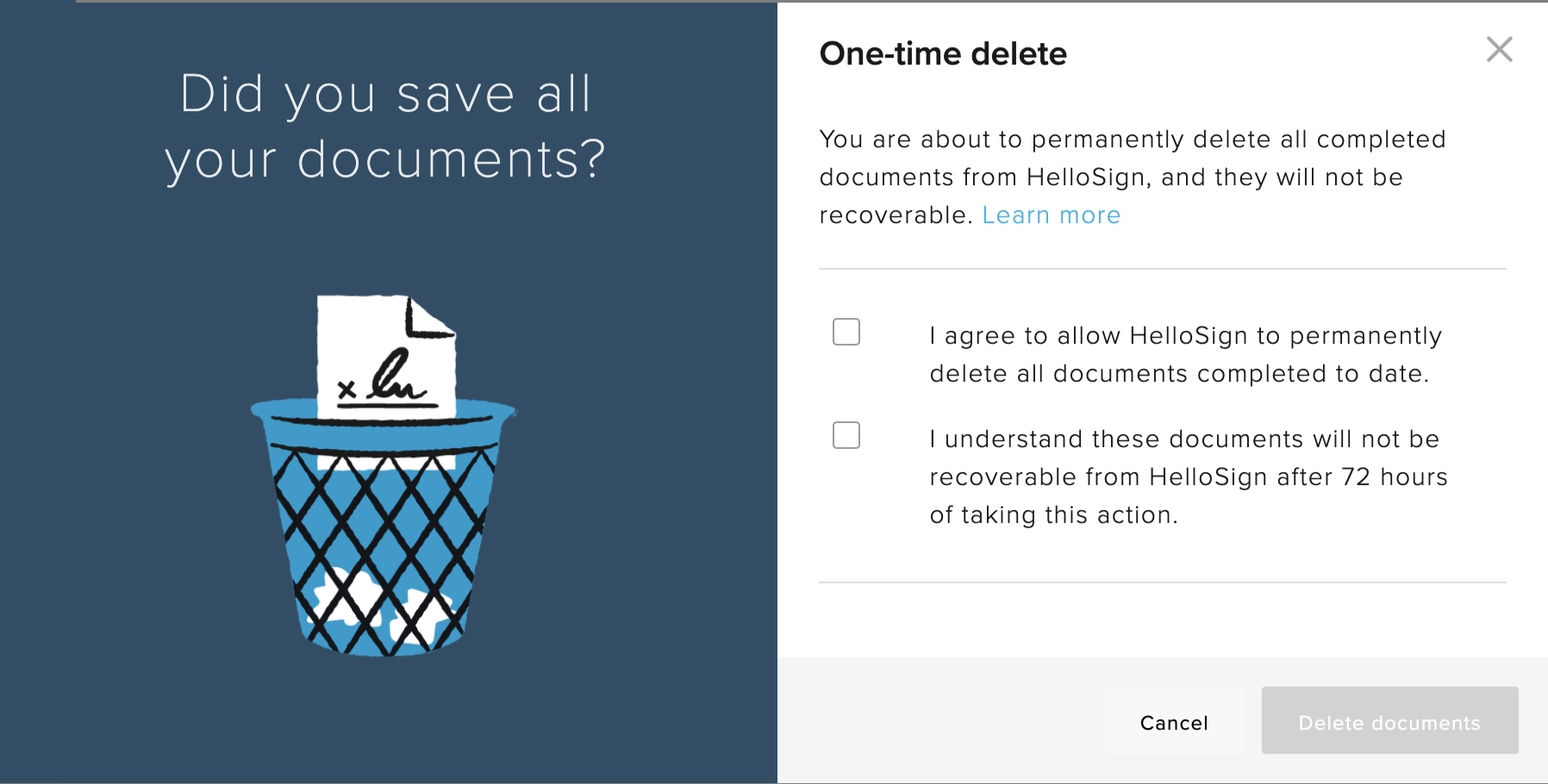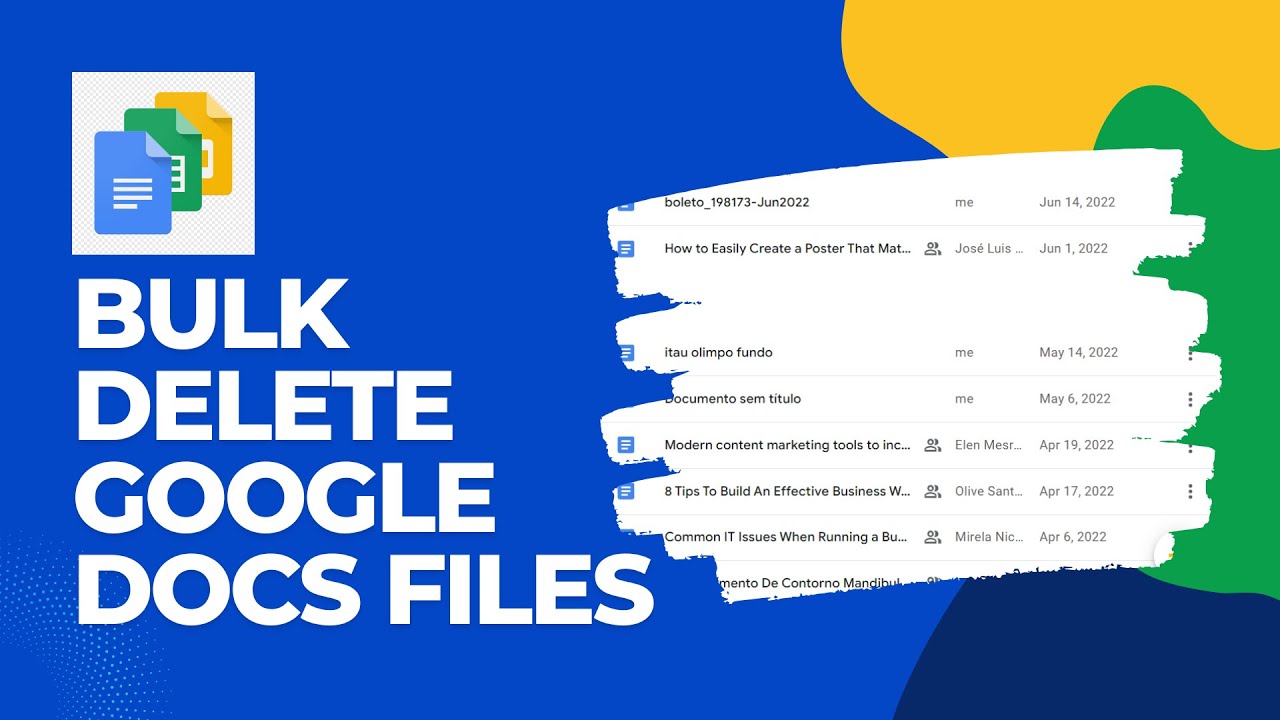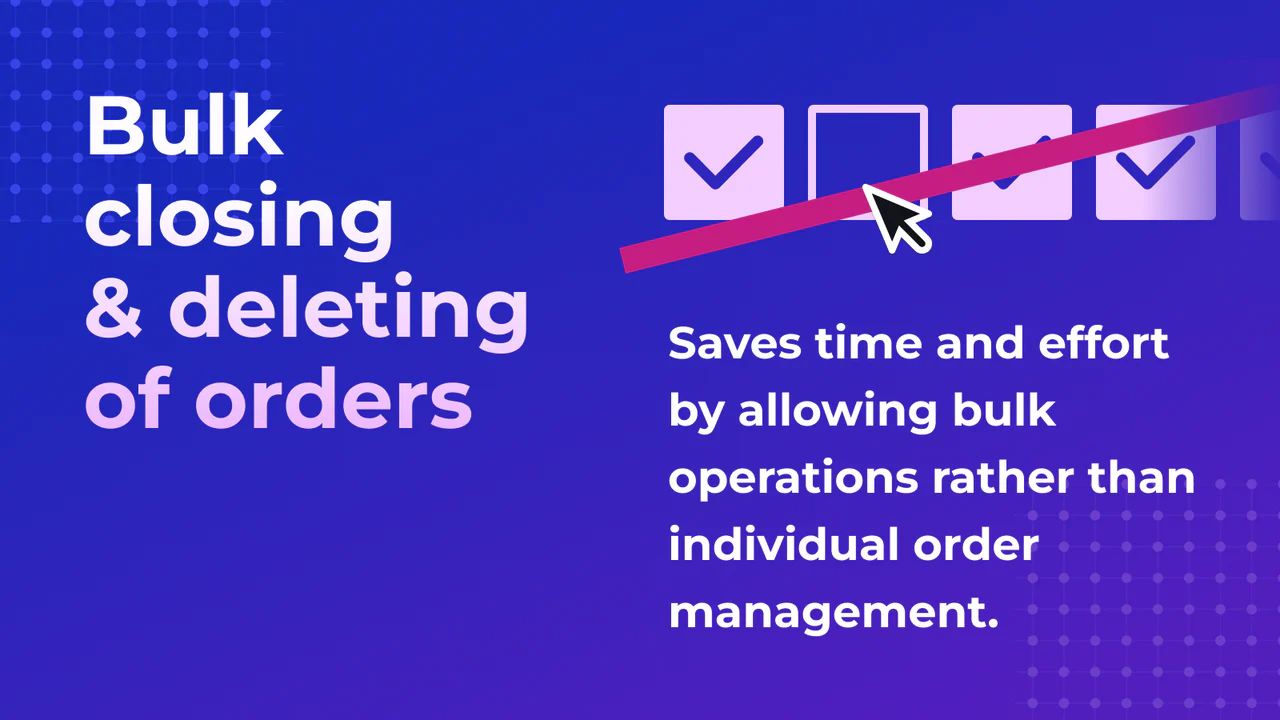
Are you tired of sifting through a sea of files, struggling to find what you need amidst the clutter? Say hello to efficiency and reclaim control of your digital space with the game-changing solution, Bulk Delete Documents. In today's fast-paced world, organizing your digital life is paramount, and this comprehensive guide offers the key to unlocking a streamlined, clutter-free experience. Dive into expert strategies, software recommendations, and step-by-step instructions designed to empower you to take charge and declutter your files like never before.
Discover the liberating feeling of effortlessly clearing out redundant, obsolete, or unnecessary documents in one fell swoop. This article is your roadmap to a more organized and efficient digital existence. Learn how tomanage storage more effectively, speed up your searches, and optimize your workflow by harnessing the power of bulk document deletion. Take control of your digital life today and revolutionize how you manage and navigate through your files with these invaluable insights and practices.
10 Ways To Effortlessly Bulk Delete Documents And Reclaim Space
Here are 10 ways to effortlessly bulk delete documents and reclaim space:
1. Delete old backups -Backups are important, but you don't need to keep every backup you have ever created. Delete old backups that you no longer need to reclaim space.
2. Use a disk defragmenter to optimize your hard drive -A disk defragmenter can rearrange the files on your hard drive to make them more efficient to access. This can help your computer run faster and free up some space.
3. Use a hard drive wipe tool to wipe your hard drive -A hard drive wipe tool can overwrite the entire contents of your hard drive with random data, making all of your files impossible to recover. This is a good option if you are selling or donating your computer.
4. Use a file shredder to securely delete files -A file shredder is a software application that can overwrite files with random data, making them impossible to recover. This is important for deleting sensitive files that you do not want to be recovered.
5. Use a document management system (DMS) -A DMS is a software application that can help you manage your documents more efficiently. A DMS can help you organize your documents, track changes, and collaborate with others on documents.
6. Use a cloud storage service to store your documents -Cloud storage services like Google Drive, Dropbox, and OneDrive allow you to store your documents online, which can free up space on your computer. You can then delete the local copies of your documents to reclaim space.
7. Use a third-party file deletion tool -There are a number of file deletion tools available that can help you bulk delete files more easily. These tools often have additional features, such as the ability to securely delete files so that they cannot be recovered.
8. Use the "Advanced Search" feature in your file explorer to search for files based on more specific criteria -For example, you can search for files that were created or modified within a certain date range. This can be helpful if you only want to delete files that are no longer relevant.
9. Use wildcards to search for multiple files at once -For example, you can use the wildcard, to search for all files that start with a certain word, such as "report". This can be helpful if you know the general name of the files you want to delete.
10. Use your file explorer's search bar to narrow down your results -For example, you can search for all files with a specific file extension, such as ".docx" or ".pdf". This can help you quickly identify and select the files you want to delete.
By following these tips, you can easily bulk-delete documents and reclaim space on your computer.
How To Delete Documents In Bulk?
There are a few different ways to delete documents in bulk, depending on the operating system you are using.
Windows
- Open File Explorer and navigate to the folder containing the documents you want to delete.
- Hold down the Ctrl key and click on each document you want to delete.
- Once you have selected all of the documents you want to delete, right-click on any of the selected documents and select Delete.
Mac
- Open Finder and navigate to the folder containing the documents you want to delete.
- Hold down the Command key and click on each document you want to delete.
- Once you have selected all of the documents you want to delete, press the Delete key.
Linux
- Open a terminal window and navigate to the folder containing the documents you want to delete.
- Use the rmcommand to delete the documents. For example, to delete all of the documents in the current folder, you would use the following command:
Unsupported elementNode please report to admin:
{"type":"code","children":[{"text":"rm *"}]}You can also use the findcommand to find and delete specific documents. For example, to delete all of the documents in the current folder with the .txt file extension, you would use the following command:
Unsupported elementNode please report to admin:
{"type":"code","children":[{"text":"find.-name'*.txt'-delete"}]}Cloud Storage Services
- Open the cloud storage service in your web browser.
- Navigate to the folder containing the documents you want to delete.
- Click on the checkbox next to each document you want to delete.
- Click on the Deletebutton.
Document Management Systems (DMS)
- Open the DMS in your web browser.
- Navigate to the folder containing the documents you want to delete.
- Click on the checkbox next to each document you want to delete.
- Click on the Deletebutton.
Delete A Document With MongoDB Atlas
Deleting documents in MongoDB Atlas can be accomplished through two primary methods - the MongoDB Atlas UI and the MongoDB Shell.
Deleting A Document Using The MongoDB Atlas UI
- Confirm Deletion -A confirmation prompt will appear. Click the "Delete" button to finalize the document removal.
- Delete the Document -Once you've identified the document, hover over it and click the trash can icon. This will flag the document for deletion.
- Find the Document -Utilize the "Find" tab to locate the specific document you want to delete. You can employ filters or simply browse through the displayed documents.
- Select the Collection -Locate the collection containing the document you want to delete. Click on the collection's name to open it.
- Access the MongoDB Atlas UI -Sign in to your MongoDB Atlas account and navigate to the desired cluster and database.
Deleting A Document Using The MongoDB Shell
1. Delete the Document -Use the db.<collection_name>.deleteOne()or db.<collection_name>.deleteMany()methods to delete the document.
2. Specify the Database and Collection -Switch to the appropriate database and collection using the use <database_name>and db.<collection_name>commands, respectively.
3. Establish MongoDB Shell Connection -Connect to your MongoDB Atlas cluster using the MongoDB Shell. Refer to the MongoDB Atlas documentation for specific connection instructions.
- deleteMany() -Deletes multiple documents matching a provided filter.
- deleteOne() -Deletes a single document based on a specified filter.
4. Verify Deletion -To confirm deletion, use the db.<collection_name>.count()method to check the remaining document count.
Remember to exercise caution when deleting documents, as the action is irreversible.
Benefits Of Bulk Document Deletion
Bulk document deletion offers several advantages over deleting documents individually, making it a valuable tool for managing large collections of data. Here are some of the key benefits:
- Reduced Data Redundancy -Deleting duplicate or redundant documents can streamline data storage and reduce the potential for confusion or errors. This can improve data consistency and simplify data management tasks.
- Simplified Data Migration -When migrating data from one system to another, bulk deletion can facilitate the process by removing unnecessary or incompatible documents, ensuring a smoother and more efficient migration.
- Improved Data Quality -Deleting erroneous or irrelevant documents can enhance the overall quality and integrity of your data. This can lead to more accurate analyses, better decision-making, and enhanced businessoutcomes.
- Cost-Effectiveness -By reducing storage requirements and improving data management efficiency, bulk deletion can contribute to overall cost savings, particularly for organizations handling large volumes of data.
- Enhanced Security -Deleting sensitive or confidential documents can minimize the risk of unauthorized access or data breaches. Bulk deletion can efficiently remove these documents, reducing potential security vulnerabilities.
- Simplified Data Compliance -In certain industries, such as healthcare or finance, data retention policies and regulatory requirements may necessitate the deletion of specific types of documents after a certain period. Bulk deletion can streamline this process and ensure compliance with data governance standards.
- Reduced Data Clutter -Bulk deletion helps declutter your document repositories, making it easier to find and manage the documents that matter. This can improve productivity and reduce the risk of overlooking important information.
- Enhanced Storage Optimization -Deleting outdated or irrelevant documents can reclaim valuable storage space on your system or cloud storage platform. This can improve overall system performance and free up resources for storing more critical data.
- Streamlined Data Management -By removing unnecessary or outdated documents, bulk deletion helps maintain data integrity and organization. This can simplify data searches, analysis, and retrieval, making it easier to locate relevant information.
- Improved Efficiency -Bulk deletion significantly reduces the time and effort required to remove multiple documents. Instead of manually selecting and deleting each document, bulk operations allow you to eliminate a large number of documents with a single action.
Software And Applications For Bulk Deletion
There are various software and applications available for bulk deletion, each with its unique features and capabilities. Here's a curated list of some popular options:
- Bulk File Eraser -A comprehensive tool for securely deleting files, folders, and entire drives. It offers various deletion algorithms, including DoD 5220.22-M (E), for enhanced data sanitization.
- Delete Files Forever -Another reliable tool for secure file and folder deletion. It employs multiple deletion passes to overwrite data, preventing recovery attempts.
- Secure Delete -A dedicated Mac application for secure file and folder deletion. It utilizes advanced algorithms to overwrite data multiple times, ensuring data irrecoverability.
- ShredIt -A comprehensive Mac application for secure data destruction. It offers various deletion methods, including shredding, file wiping, and drive erasure, catering to specific data security needs.
- GoodSync -A versatile tool that combines file synchronization with bulk deletion capabilities. It allows you to efficiently delete files and folders across different devices and platforms.
- Duplicate File Finder and Remover -A dedicated tool for identifying and removing duplicate files, helping you reclaim storage space and streamline file management.
- Easy File Delete -A user-friendly tool for bulk file deletion. It offers simple drag-and-drop functionality and various deletion options, including permanent deletion and file shredding.
- BCWipe -A powerful tool for secure file and folder deletion. It employs various deletion techniques, including DoD 5220.22-M (E) and Gutmann's algorithm, for enhanced data sanitization.
- File Shredder -A simple and straightforward tool for secure file deletion. It offers different deletion methods, including overwriting with random data and multiple deletion passes.
- PrivaZer -A comprehensive privacy protection tool that includes bulk file deletion capabilities. It can securely delete files, folders, and browsing history, safeguarding your privacy.
These software and applications offer various features and capabilities tailored to specific data deletion needs. Choose the tool that best suits your requirements and ensures secure and efficient bulk deletion.
Frequently Asked Questions About Bulk Delete Documents
How Do I Delete A Lot Of Documents At Once?
You can also delete multiple documents simultaneously. Navigate to the folder containing the documents you wish to remove. Click and drag your mouse, or use the Shift key, to select multiple documents. Once selected, right-click, or Control and click, and move them all to trash.
What Is Bulk Deleting?
The bulk deletion feature helps you to maintain data quality and manage the consumption of system storage by deleting data that you no longer need. For example, you can delete the following data in bulk: Stale data. Data that is irrelevant to the business.
How Do I Bulk Delete Google Storage?
Delete objects in bulkTo bulk delete objects in your bucket using Object Lifecycle Management, set a lifecycle configuration rule on your bucket where the condition has Age set to 0 days and the action is set to delete.
Conclusion
Mastering the art of bulk document deletion is more than just a process of clearing out digital clutter; it's a gateway to efficiency, productivity, and peace of mind. By implementing a well-thought-out deletion strategy, individuals and organizations can revolutionize their digital ecosystems. The benefits extend far beyond mere space reclamation; they encompass improved searchability, faster access to essential files, reduced cybersecurity risks, and a more streamlined workflow.
Remember, effective bulk document deletion isn't a one-time task but an ongoing practice that requires regular maintenance. By integrating best practices, leveraging suitable tools, and staying mindful of data security and compliance, you can transform your digital landscape into a well-organized, efficient, and manageable space. Take charge of your digital life, streamline your processes, and enjoy the benefits of a clutter-free environment by embracing the power of bulk document deletion.

